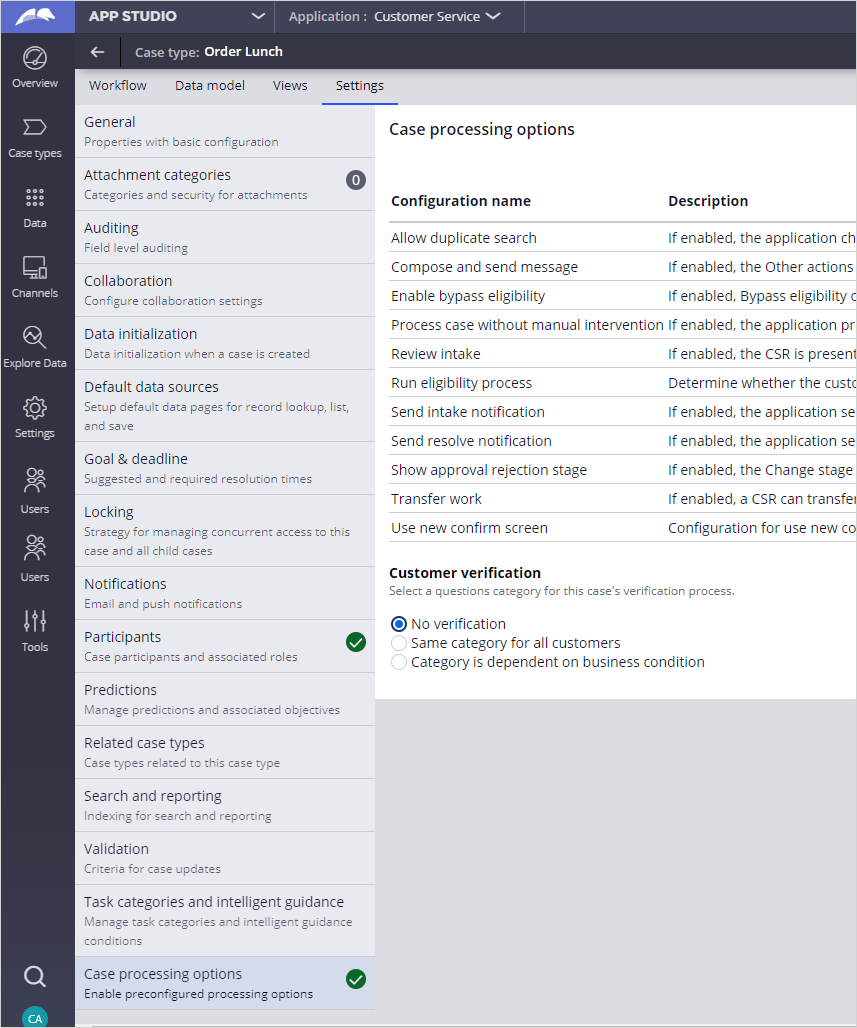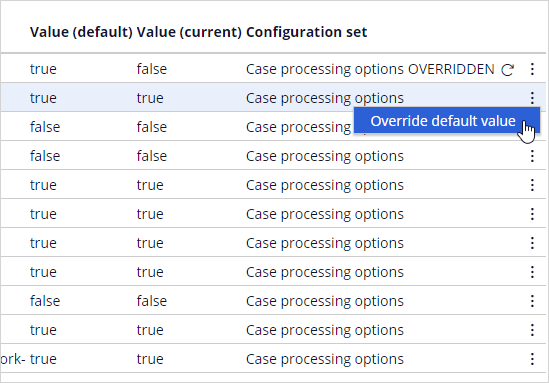
Service request template
Service requests represent the work that takes place during an interaction with a customer. Customers can complete service requests by using a self-service portal, a chatbot, or a speaking with a CSR in a contact center. Service requests are also known as service cases or case types.
Pega Customer Service™ ships with out-of-the-box service requests that you can modify to meet your business needs. For example, there are service cases for scenarios such as address changes, billing inquiries, scheduling a medical appointment, making a payment, and fee inquiries.
Service case template
Each service request follows a standard service case template that includes a set of stages, steps, and capabilities. Pega Customer Service includes case type templates for address changes, making payments, policy inquiries, and other templates.
For a complete listing of service request templates that are available with Pega Customer Service, see the Pega Customer Service documentation.
You use a service case template to create a new case type for your application. The following figure shows the flow of the Customer Service Generic Template.
Configuration sets
Configuration settings provide developers with a unified framework to customize parameters for application behavior. The settings are organized into configuration sets that associate the settings with a common element, such as an application feature or specific case type.
Configuration settings and configuration sets provide low-code options to control application behavior. Configuration settings minimize the need for rule overrides and custom rule changes to help deliver applications that are easier to maintain, upgrade, and deploy. Minimizing custom rule overrides shortens time-to-market.
You can use a case template to quickly create a new case type that includes the most common case processing features. Pega Customer Service includes two case templates: the Customer Service Generic Template and the Customer Service Remote Template. The generic template is broken down into standard stages. It contains configuration options to enable or disable a given stage. Each stage has a set of configuration properties that are associated with it.
The configuration is accessible on the Settings tab of the case in the Case processing options section.
The configuration set named Case processing options is created and configurations associated for each Case processing option is created of type 'Boolean'. You can change the default value by using Override default value option.
This Topic is available in the following Module:
If you are having problems with your training, please review the Pega Academy Support FAQs.
Want to help us improve this content?


